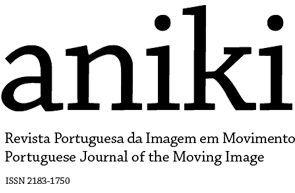On Prescriptive Technological Modes of Cinematic Research Methods and Artistic Autonomy
Abstract
Ursula Franklin’s delineation of “holistic” and “prescriptive” modes of technology offers a useful lens for viewing cinematic methods of artistic research. As new cinematic tools become available to researchers, artistic autonomy can be impacted by the weight of media infrastructures, which often assign tasks to their users, rendering user behaviours as the outputs of technological systems. A suggested strategy for researchers is to adopt “self-reflexivity” as an inherent aspect of cinematic research methodologies, thereby embedding critical attitudes towards new-media technological environments.
References
Coupland, Douglas. 2018. “I no longer remember my pre-internet brain.” Accessed May, 2025. http://edition.cnn.com/style/article/douglas-coupland-internet-brain/index.html.
Dillon, Steve. 2006. The Solaris Effect. Austin: University of Texas Press.
Fedorova, Ksenia. 2020. Tactics of Interfacing; Encoding Affect in Art and Technology. Cambridge: MIT Press (Leonardo).
Franklin, Ursula M. 1990. The Real World of Technology. Toronto: CBC.
Fuller, Matthew. 2000. “It looks like you’re writing a letter: Microsoft Word”. Nettime. Accessed 10/02/2025. https://www.nettime.org/Lists-Archives/nettime-l-0009/msg00040.html.
Gould, Glenn. April, 1966. “The Prospects of Recording”. High Fidelity Magazine, vol. 16, no 4: pp. 46-63. https://www .collectionscanada.gc.ca/glenngould/028010-4020.01-e.html.
Harwood, John. 2011. The Interface; IBM and the Transformation of Corporate Design; 1945–1976. Minneapolis: University of Minnesota Press.
Taylor, Charles. 1991. The Malaise of Modernity. Montréal: House of Anansi Press.





